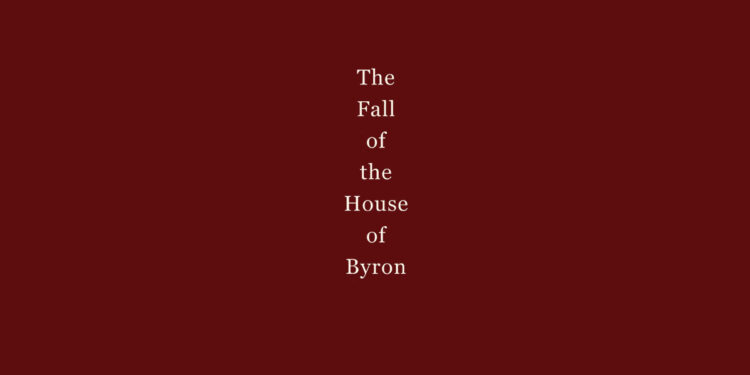The Fall of the House of Byron by Emily Brand – Review

By Sandra Callard
Emily Brand’s book, The Fall of the House of Byron, is a glorious foray into the extravagant and outrageous behaviour of the various individuals of the house of Byron as they became, by turns, beloved and despised by the superior and influential members of the Georgian beau monde.
The traditional, and very beautiful, family home of the Byrons was Newstead Abbey in Nottinghamshire, the house and estate being lovingly built and restored by William, the 4th Baron Byron, and systematically ruined and abandoned by the 5th Baron, also William, who became known as ‘The Wicked Lord’. His life was one of debauchery, debt, waste and crime. He admitted a charge of murder but was acquitted by a judge still in awe of the Byrons.
The fascinating story of the family is littered with men named William and is only saved from total incomprehension by the terrific two-page chart of the hereditary House of Byron. I was forced to refer back to this on numerous occasions for a clearer understanding of which particular William or George or Frances I was reading about, and it does indeed do a superlative job.
 The research for this book has obviously been a massive undertaking and is immaculately crafted. We can read letter after letter, to and from family members, that clearly depict individual characteristics which echo through the years with a startling clarity. The narrative is steady and lucid as it paints a growing picture of a world so incredibly unlike our own, but one which appears unbidden and clear in the imagination.
The research for this book has obviously been a massive undertaking and is immaculately crafted. We can read letter after letter, to and from family members, that clearly depict individual characteristics which echo through the years with a startling clarity. The narrative is steady and lucid as it paints a growing picture of a world so incredibly unlike our own, but one which appears unbidden and clear in the imagination.
“Erudite and fascinating”
The most famous Byron is probably the 6th Baron, George Gordon Byron, who unexpectedly attained his title when all other possible claimants had died. The son of ‘Mad Jack’ John Byron and grandson of one of the few admired Byrons, Vice Admiral John Byron, who had a superb naval career and was possibly the only offspring of the 4th Baron, another William, who received praise from the public, the Government and the King. A rare thing indeed amongst this turbulent family.
Pleasingly, women feature prominently and unexpectedly in a book about Georgian times, when rich women were married for their money and had no power over anything ever again. Their money reverted to their husband shortly after marriage, as did their children, and it is refreshing to see that most of the Byron women were as forthcoming as the law allowed. Isabella, sister of the 5th Baron or ‘Wicked Lord’, was herself a tour de force who engendered ridicule and affection in equal measures. The author’s descriptions of her are humorous and moving as she parades before the reader in her Georgian splendour.
George Gordon Byron, the 6th Baron, however, was a poet of some renown whose writings are now considered among the most beautiful in literature. But George had little time for his home, his country or his wife, alongside many of his forebears, and spent most of his time abroad with other writers. Particular amongst those were Percy Bysshe Shelley, ever a celebrity poet, and his wife Mary Wollstonecraft, the daring writer of the most celebrated horror book ever written, Frankenstein. They lived together for some years in various countries abroad and Byron married Mary after Shelley’s bizarre death by drowning in Italy.
This is a most beautiful book. Erudite and fascinating, it is by no means an easy read if you are not a Byron scholar, but it is so worth putting a toe in the water. The characters therein, be they unsavoury as most were, or patriotic and brave as a few were, loom large in the imagination and inspire further investigation into this unorthodox and fascinating family.
‘The Fall of the House of Byron’ by Emily Brand is published by John Murray, £25 hardback









